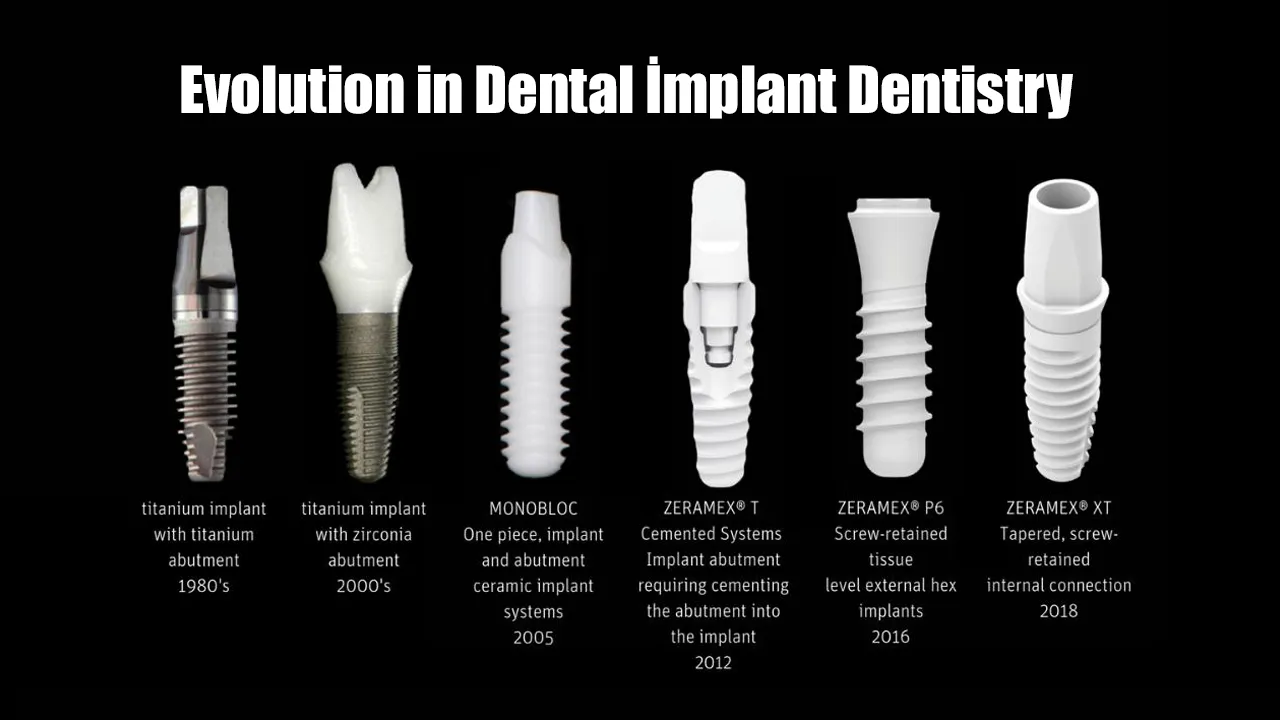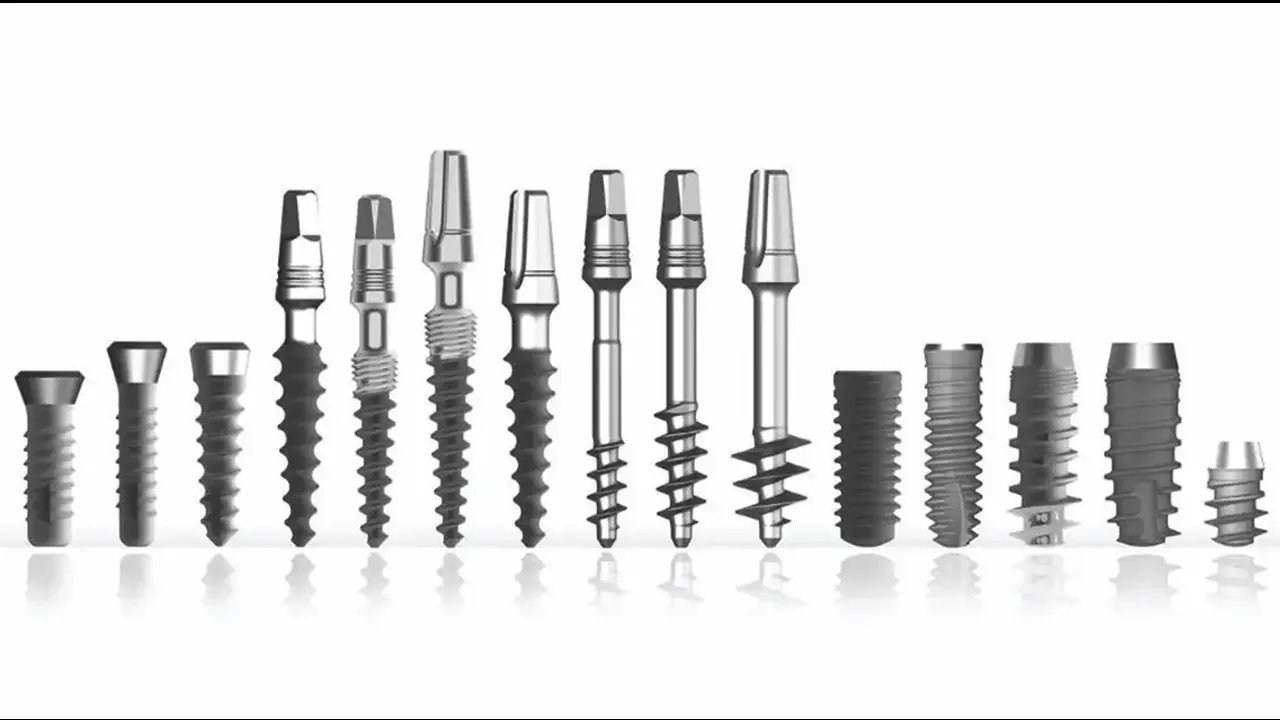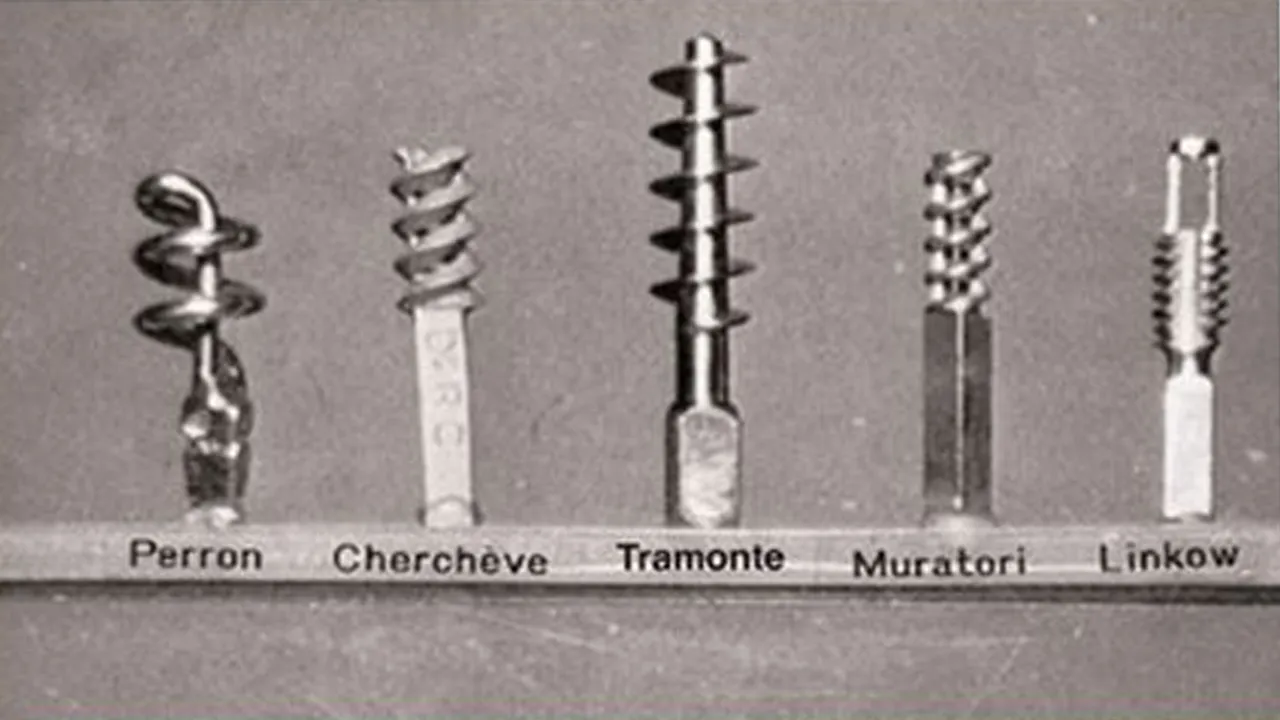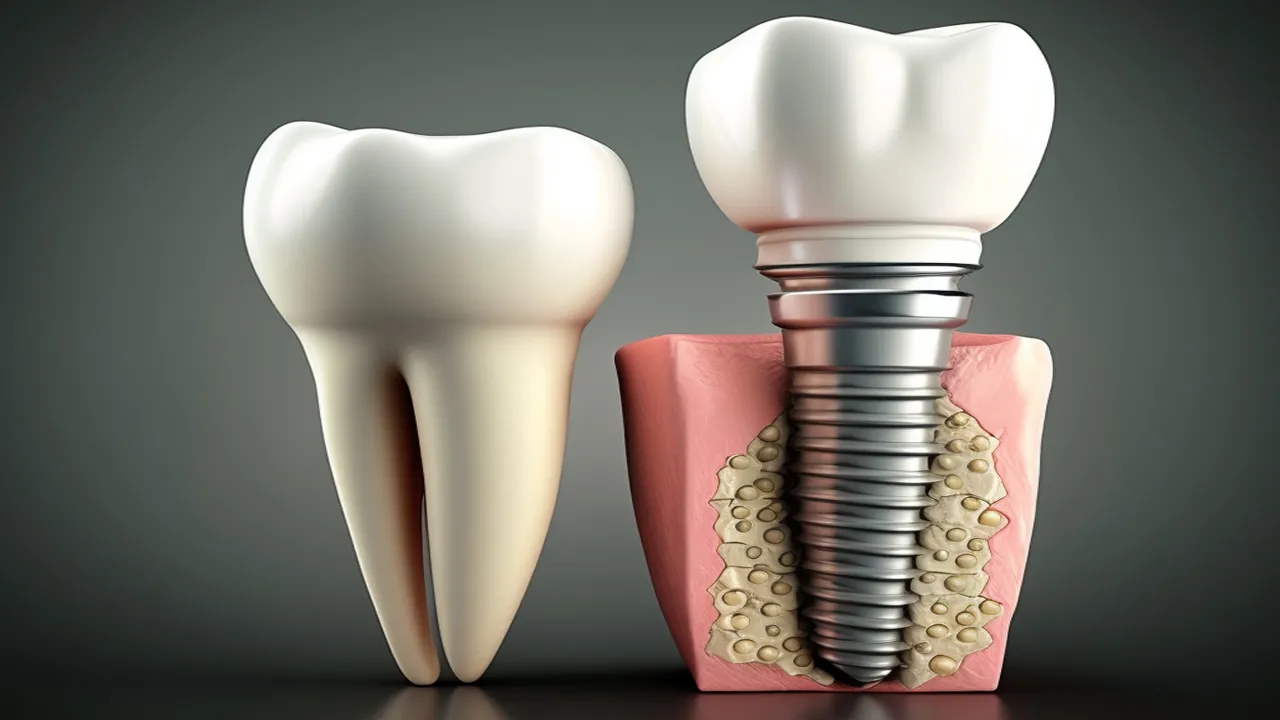The history of dental implants dates back thousands of years, evolving from ancient tooth replacements to modern, cutting-edge solutions, making dental implant history a fascinating journey of innovation and advancement. Dental implants have a long record dating back thousands of years.
The primary known dental implants were made of materials such as bamboo, seashells, precious stones, and animal bones, and were used by ancient civilizations to replace missing teeth. Long before modern technology in dentistry, ancient people like the Mayan tribes had used materials like sea shells as a substitute for missing teeth.
Dental implants have been accessible since the 1950s. A dentist named Dr. Per-Ingvar Branemark discovered that titanium, a metal with unique biocompatible properties, used to successfully integrate with the human jawbone and serve as the basis for a dental implant. It marked the beginning of modern dental implant surgery. However, their recognition really took off in the late 1990s. Dental implant surgery became more widely available, and the use of titanium dental implants became more ordinary.
Initially devised as a means to replace damaged or lost teeth, these innovative devices are now commonly used for cosmetic purposes. A dental implant consists of two components: an artificial root placed into the jawbone, and a crown-like prosthetic tooth mounted on top. The body's tissue integrates with the titanium implant, creating a durable bond that allows for regular activities such as eating and speaking without fear of displacement over time. The procedure is minimally invasive, though there is discomfort during post-operative recovery. Local anaesthesia and antibiotics are prescribed to combat any pain or infection.
Most dental implants last a lifetime when positioned correctly. However, they need to be replaced after many years due to wear and tear. Implants are widely considered one of the safest and most effective forms of long-term dentistry nowadays.
Though expensive compared to more traditional methods like bridges and dentures, the investment pays dividends in terms of health, comfort, and convenience. By leveraging modern technology and science, it has become easier than ever before to obtain a brilliant smile.
 Dental implants have become a widely accepted and extremely successful treatment option for replacing lost teeth. Their success rate is above 95%, making them one of the most successful treatment alternatives available. New materials and techniques, like the "one-stage" implant operation, have made dental implants much more effective and reliable.
Dental implants have become a widely accepted and extremely successful treatment option for replacing lost teeth. Their success rate is above 95%, making them one of the most successful treatment alternatives available. New materials and techniques, like the "one-stage" implant operation, have made dental implants much more effective and reliable.
Titanium is a material that is frequently used in tooth implants. Titanium is a biocompatible metal that is frequently utilized in the area of dentistry. One variety of dental implants known as titanium tooth implant is one that is fabricated from titanium. Titanium dental implants are utilized to replace teeth that have been lost because they provide a strong base upon which a dental crown or other prosthetic device is placed. A titanium screw is inserted into the jawbone during the surgical procedure that is normally required to place a tooth implant made of titanium. The screw is then secured in position.
The implant is given time to recover and become integrated with the jawbone over the course of a few months after that. A dental crown or another prosthetic device is connected to it when the implant has finished fusing with the jawbone. It provides a substitute for the lost tooth that is both functional and appears to be natural looking.
Tooth implants made of titanium have a good success rate and are a treatment option that is generally well-accepted for the replacement of missing teeth. They are sturdy and long-lasting, and are likely to serve an individual for many years if they take proper care of them. Furthermore, titanium dental implants have a low risk of rejection or other issues and are generally well tolerated by the body.
What is the History of Dental Implants?
Dental implants have been around, dating back as far as 4,000 years ago.
Chinese have been practicing replacing a missing tooth by using bamboo. Bamboo was readily available in China back then, making it a popular choice. Another reason is that bamboo is easily carved into shapes mimicking the real teeth. Since ancient times, people have been trying different materials as a replacement for missing teeth.
Egyptians used gold and other metals for dental implants, especially for royals like their kings.
The ancient Mayans took advantage of the sea and used sea shells as replacements for their missing teeth. Seashells, aside from their function, look good in their mouth.
Dental implants were often performed using a surgical technique known as the "two-stage" method in the past. It involved two separate surgical procedures: the first procedure involved placing the titanium implant into the jawbone, and the second procedure involved attaching the dental crown to the implant.
In Europe, there was quite an unusual practice back then where people used the teeth of a deceased person to replace their lost teeth. Others get the teeth of poor people or slaves and use them for tooth replacement. Those practices are unethical and unhygienic and expose people to infections.

What is a Dental Implant?
A dental implant is a dental practice that requires surgery. The method restores tooth roots with metal. It replaces decaying or missing teeth with teeth that appear and work like authentic ones. Dental implants are usually set by dentists or oral surgeons. Dental implants are used as a substitute for missing teeth and are an alternative for people who want to improve their oral health. They are used to replace a single missing tooth or to brace a bridge or denture for a number of missing teeth.
Dental implants are typically advised for people who have lost teeth due to injury, gum disease, or other factors. They are an effective solution for people who want to maintain their mouth's function and aesthetics and improve their oral health. Dental implants are possibly used by people in a specific age group. They are not suitable for everyone. Some people do not have adequate bone density in the jaw to support an implant, or they have certain medical conditions that make the process less advisable. In these cases, alternative treatment options such as dentures or bridges are likely to be recommended. It is essential for individuals considering dental implants to consult with a dental professional to determine if they are a fit candidate for the procedure.
Dental implants are not advised for young children, since their bones are still developing. Placing an implant in a young child stunts the growth of the surrounding teeth. It is even possible to cause improper development of the jawbone. Teens are allowed to get implants provided that a female teen is at least 15 years old. For young male teens, the minimum age requirement is 17 years old. Dentists are healthcare professionals who specialize in the prevention, diagnosis, and treatment of diseases and conditions of the mouth, teeth, and gums.
Many dentists are trained in placing dental treatment implants and performing the procedure in their own practice. Oral surgeons are specialists who have completed advanced training in surgery of the mouth, teeth, and face. Oral surgeons are highly skilled in performing complex procedures, including the placement of dental implants. A team approach is used, with both a dentist and oral surgeon working together to place the implants in some cases.
It is often the case for patients who require extensive dental work or have complex medical histories. Regardless of who performs the operation, it is important for the person placing the dental implants to acquire the appropriate training and experience to ensure the operation is performed safely and effectively.
H2 
Who made dental implants?
Dr. Norman Goldberg and Dentist Aaron Gershkoff were the pioneers in making dental implants. It was during the war that the Doctor noticed that most people were unable to tolerate a regular denture. Dr. Goldberg started to collaborate with a dentist named Aaron Gershkoff, and they did the first subperiosteal implant in 1948.
Dental implants have continued to grow and develop in several ways that most have likely not imagined since then. There are even implant restorations to help safeguard the implant and maintain a set of teeth that look naturally healthy. With the help of modern technology, dental implants are now better fitted and safer for the human body. Dental implants nowadays use materials that are biocompatible with the human body and less likely to produce any complications.
What is a dental implant made of?
A dental implant is a small device used to fill in missing teeth. It consists of three main parts: the implant itself or screw, the abutment, and the dental crown or prosthesis. An implant post or screw is a small device used in dental implant surgery to restore missing teeth.
The implant post or screw is made of a biocompatible material, such as titanium, and is set into the jawbone to act as a substitute for the root of a missing tooth. The implant post or screw is typically cylindrical in shape and has a screw-like thread on its surface. The process allows it to be securely placed into the jawbone and allows for a solid and stable base for the dental crown that is attached to it.
After the implant post or screw is placed into the jawbone, it is allowed to heal and integrate with the adjacent bone tissue over a period of several months. Once the implant has fully integrated with the jawbone, an abutment is attached to the top of the implant, and a dental crown or other prosthetic device is placed on top of the abutment to provide a functional and natural-looking cover for the missing tooth. The implant is typically made of titanium, a biocompatible metal that is widely used in the field of dentistry.
Titanium has unique properties that allow it to integrate with the human jawbone and serve as a stable foundation for a dental crown or another prosthetic device. The abutment is a small component that connects the implant to the dental crown. It is typically made of titanium or another biocompatible material and is custom-made to fit the specific implant and crown used.
The dental crown or other prosthetic device is the part of the dental implant that is visible above the gum line. It is typically made of porcelain or another type of ceramic material, which is chosen for its natural-looking appearance and durability. Other materials, such as acrylic or gold, are used too. Generally, dental implants are made up of a combination of biocompatible materials that are chosen for their strength, durability, and ability to provide a functional and natural-looking replacement for missing teeth.

What Evolutions Have Been Made in Dental Implant Design?
Dental implants have come a long way since their inception in the 1960s. Some of the major evolutions in dental implant design include its materials. Materials used in Dental implants were originally made of titanium, which is biocompatible and strong. However, newer materials such as zirconia and ceramic have been developed, which offer some advantages such as better aesthetics and potentially improved biocompatibility.
Compared to the primitive days when people during ancient times uses materials that are only readily available in their region. These materials were even unsuccessfully accepted in the human body and caused complications in the long run. With careful studies, dentists and other medical professionals have come up with materials that are compatible and safe when integrated into the human body.
Another improvement concerning dental implants is the surface treatment. Various surface treatments have been developed to improve the integration of the implant with the surrounding bone. These include sandblasting, acid etching, and plasma spraying, which create a rough surface on the implant that promotes bone growth.
Dental implants are created to act as a substitute for a natural tooth. Thus, shape is essential. Traditional dental implants have a cylindrical shape, but newer designs have been developed that more closely mimic the shape of natural teeth roots. These tapered implants offer improved stability and better integration with the surrounding bone.
There are now mini implants available. They are smaller than traditional dental implants and are designed for use in cases where there is limited bone density or when a smaller implant is desired. Compared to the usual healing process of dental implants before, nowadays, they load immediately.
Traditional dental implants require a healing period before a restoration (such as a crown) is placed on top of the implant. However, newer designs allow for immediate loading, which means that restoration is likely to be placed on the implant as soon as it is placed in the mouth. It reduces treatment time and improves patient satisfaction. Technology plays a big part in the advancement of modern dental technology. Computer-aided design and manufacturing are now available to make the process more precise.
Modern dental implants are often designed and manufactured using computer-aided design (CAD) and computer-aided manufacturing (CAM) techniques. The technique allows for more precise and customized implants that are tailored to the individual patient's needs.

Who was the first one to successfully perform a Dental Implant Surgery?
The foremost recorded successful dental implant surgery was executed by a Swedish orthopedic surgeon named Per-Ingvar Brånemark in the early 1960s. Dr. Brånemark was analyzing bone remedy and regeneration in rabbits when the doctor uncovered that titanium is possible to bond with living bone tissue in a process known as osseointegration. Dr. Brånemark then applied the knowledge to dental implants, utilizing titanium screws to replace missing teeth in human patients.
The pioneering work of Dr. Brånemark in the field of dental implants has had a remarkable impact on modern dentistry and has helped to enhance the lives of millions of individuals around the globe. Since Dr. Brånemark's pioneering work, dental implant surgery has become a generally trusted and successful treatment alternative for replacing missing teeth. Dental implants are used as a substitute for single teeth, multiple teeth, or a complete arch of teeth and are used in various clinical situations at present.
Is the first Titanium Dental Implant a success?
Yes, the first titanium dental implant surgery was a success. The surgery was done by an orthopaedic surgeon named Branemark in 1965. Dr. Branemark was the one who discovered that titanium fused together successfully while conducting a study using a femur bone of a rabbit. The study of Dr. Branemark led to momentous advancement in the procedures used for teeth replacement. Titanium has been widely used since then. Dentists and Oral Surgeons began to use titanium alloy screws by utilizing a rough surface that is believed to help improve osseointegration.
What materials were used before titanium was discovered to be effective for Dental Implants?
Readily available materials were already utilized as replacements for missing teeth during the old days. China found evidence of dental implants as early as 4,000 years ago. Chinese use bamboo as a tooth substitute, thinking it is durable enough for chewing. Bamboo was abundant at that time and accessible. Bamboo is easy to carve into a similar shape to a tooth.
Another widely used material during ancient times was gold. Ancient Egyptians are famous for always giving importance to their physical appearance. They use gold as an ornament and even to replace a tooth. An Egyptian king was the first documented evidence who had a replacement tooth made of metal. The king's upper jawbone had a gold peg hammered through it. Egyptians even used gold wires to secure and steady animal teeth and bones they used in the mouth.
Two couples made one significant discovery of using dental implants for ages in Honduras in 1931. Wilson and Dorothy Popenoe found a woman's remains with implanted incisors teeth made of pieces of shell. The couple noticed that the shells looked good and were growing around the implanted teeth.
Before titanium was discovered to be effective for dental implants, various materials, including gold, porcelain, and acrylic resin, were used. Gold has been used for dental implants for centuries as it is a solid and biocompatible material. However, it is expensive and is quite visible in the mouth, which needs to be more aesthetically pleasing for some people.
Porcelain and acrylic resin were used for dental implants but are less strong and durable than titanium. On the other hand, Europeans used the teeth of poor people or even those who passed away and transplanted them into other people's mouths.
People began to rob graves to get teeth for implants from the 1500s to the 1800s. Thankfully, the unethical practice has died down. There is a higher risk of infection for dental implants from another person or animal's mouth. Dental implants during ancient times were often crafted from stones and gems, such as jade and quartz. Even though the methods used to fix these things in the jawbone were very simple, they worked surprisingly well. A skilled practitioner was able to build a secure anchorage using only flint tools and local resins. Of course, such treatments still need to be improved by today's standards. However, they still appreciated their ingenuity and resourcefulness.
Archaeological excavations in France unearthed a Celtic tomb with a false tooth made of iron. It was believed that it was painfully hammered into the jaw. Archaeologists found various other precious stones and gems like jade in ancient times. Numerous substances were used as implants during the 1800s, including corrugated porcelain, silver capsules, and iridium tubes. However, none of these materials was successful.
A porcelain crown was mounted on a platinum disc in 1886 but was eventually rejected by the body. Several attempts have been made to use alternatives for tooth replacement during dental implants. However, all attempts are unsuccessful because of the absence of lasting osseointegration.
What are the Developments of Modern Dental Implants?
Dentistry has come a long way since the days of primitive dental implants crafted from stones and gems. Modern implants are typically constructed with biocompatible materials such as titanium or zirconia, offering superior durability and strength while integrating seamlessly with the surrounding tissues. It allows for safe and secure placement within the jawbone that not only provides support for prosthetic teeth but even preserves their healthy integrity.
Furthermore, advances in computer technology have enabled more precise implantation techniques, allowing for more accurate designs that are planned ahead to maximize their therapeutic benefits. With these developments, dental implants provide patients with greater comfort and confidence than ever before.
One major advancement in dental implants is the development of osseointegration, which is the process by which the titanium post becomes securely integrated with the jawbone. The process is crucial for the implant's long-term stability and is made possible using high-grade titanium and precise surgical techniques. Another advancement in dental implants is the use of computer-guided surgery, which allows for more accurate placement of the implants and reduces the risk of complications. The technique involves using 3D imaging to create a detailed map of the jawbone and surrounding structures, which is then used to guide the placement of the implants. Other advancements in dental implants include the development of new types of materials for the crowns, such as ceramic and zirconia, which are more aesthetically pleasing and durable than traditional materials. In addition, advances in dental implant design have resulted in the development of mini implants, which are smaller in size and require less bone density for successful placement.
When was Osseointegration discovered?
Osseointegration is the process by which living bone tissue grows into and around the surface of a foreign object, such as a dental implant. The process helps to anchor the implant in place and provides a strong foundation for the replacement tooth or teeth. Osseointegration was first discovered by a Swedish orthopaedic surgeon named Per-Ingvar Brånemark in the early 1960s. Dr. Brånemark was studying bone healing and regeneration in rabbits when he observed that titanium screws that he had implanted in the rabbits' bones had become securely anchored in the bone tissue.
The doctor then applied the knowledge to dental implants, using titanium screws to replace missing teeth in human patients. Dr. Brånemark's pioneering work in the field of osseointegration and dental implants has had a significant impact on modern dentistry and has helped to improve the lives of millions of people around the world. Osseointegration is a widely accepted and successful treatment option for replacing missing teeth nowadays.
When was using of Abutment discovered?
An abutment is a little connector used in dental implant operations to connect the implant to the replacement tooth or teeth. Abutments are usually made of titanium, gold, or a mixture of these materials and are custom-made to fit the particular dental implant and tooth used. The use of abutments in dental implant surgery has been a standard practice for many years. The date when abutments were first utilized in dental implant surgery is not clear, but it is likely that they have been used in some form since dental implants were first introduced as a treatment alternative for missing teeth. Others believed that it was discovered in the late 19th century. Today, abutments are an essential part of dental implant surgery and are used to secure the replacement tooth or teeth to the implant and provide a steady base for the new teeth. Abutments are carefully designed and manufactured to ensure the replacement teeth' secure fit and long-term stability. Its versatility makes it a valuable asset in any practice, with innovative solutions being used to address issues such as alignment, periodontal disease, implants, and aesthetics. An abutment is a small component used in dental implant surgery to connect the dental implant to the dental crown or other prosthetic devices. The abutment serves as a connector between the implant and the crown, and it helps to secure the crown in place and provide stability. Abutments are frequently made of titanium or another biocompatible material and are custom-made to fit the specific dental implant and crown used. The abutment is generally set during the second stage of a two-stage dental implant procedure, or throughout the same surgical procedure as the implant in a one-stage procedure. Generally, abutments are an important component of dental implants because they help to ensure a strong, stable link between the implant and the crown, which is necessary for the dental implant to work correctly. The crown is not properly secured to the implant without an abutment, which leads to problems such as loose or unstable teeth.
When was using Crown and Healing cap discovered?
Dental crowns are believed to have been first utilized as early as 200 AD. The Etruscans were the civilization who lived in Tuscany, believed to use dental crowns. A crown is a dental restoration that covers a damaged or decayed tooth. They are normally placed to make the tooth stronger, maintain the tooth’s original shape, and make the tooth functions normally. Crowns are made of various materials, including porcelain, ceramic, and gold, and are custom-made to fit the specific tooth being treated. Dr. Charles H. Land introduced and patented the porcelain jacket crown in 1889. The crown was a success in making the tooth look whole again. A healing cap, known as a temporization cap, is a type of crown used to protect the dental implant site while the implant integrates with the adjacent bone tissue. Healing caps are typically made of acrylic or similar material and are used to cover the dental implant until the permanent crown is ready to be placed. The use of crowns and healing caps in dental implant surgery has been a standard practice for many years. The exact date when these treatments were first used in dental implant surgery is not clear, but it is likely that they have been used in some form since dental implants were first introduced as a treatment option for missing teeth. Today, crowns and healing caps are an essential component of dental implant surgery and are utilized to protect the dental implant and provide a stable base for the replacement teeth. Crowns and healing caps are carefully designed and produced to ensure the replacement teeth' secure fit and long-term stability.
Are Dental Implants expensive back then?
Yes, dental implants are expensive back then. The price of dental implants has varied over time and varies significantly depending on various factors, such as the region of the practice, the complexity of the case, and the materials used. In general, dental implants have been considered a more expensive treatment option for replacing missing teeth compared to other alternatives, such as bridges or dentures. The dental implant procedure is expensive because it uses expensive raw materials to ensure it is compatible with the human body. Depending on the number of teeth involved, a single dental implant is cheaper compared to multiple teeth that need to be replaced. The cost of dental implant operation was even higher due to the limited availability of implants and the specialized training and equipment required for the procedure in the early days of the dental implant method. Dentists and Oral Surgeons have spent a lot of time undergoing multiple pieces of training and specialised education. They must be updated with the latest technology concerning advanced dental healthcare and practices. It is not surprising at all that they charge a premium amount for their skills and service. However, as dental implant surgery has become more common and the materials and techniques used have gone better, the Cost of Dental Implant treatment has generally decreased.
Is the Bone Grafting method used back then?
Yes, the bone grafting method was used back then in dental implant operations. Bone grafting is a surgical method that requires adding new bone tissue to an area of the body to repair or reconstruct damaged or missing bone. Bone grafting is often used in dental implant surgery to help rebuild the jawbone and create a strong foundation for the implant. The use of bone grafting in dental implant surgery has been a standard practice for several years. The exact date when bone grafting was first used in dental implant surgery is not precise, but it has likely been used in some form since dental implants were first introduced as a treatment option for missing teeth. There are several different techniques for bone grafting, including using bone from another part of the patient's body, using donated bone tissue, or using synthetic bone grafting materials. The choice of technique depends on the patient's specific needs and the surgeon's preferences.
Is anesthesia used for Dental Implants back then?
Yes, anaesthesia is used for dental implants back then. A local anaesthetic or some sedation is required as part of any surgical method. Anaesthetic lessens the pain and discomfort of an operation. It helps a patient’s mind to relax. Anaesthesia is typically used during dental implant surgery to help manage pain and discomfort during the procedure. Several different types of anaesthesia are used for dental implant surgery, including local anaesthesia, conscious sedation, and general anaesthesia. The type of anaesthesia used for dental implant surgery depends on the complexity of the case and the preferences of the patient and surgeon. Local anaesthesia is typically used for minor procedures and involves numbing the area around the implant site with a local anaesthetic. Conscious sedation involves administering medication to help the patient relax and feel drowsy during the procedure. General anaesthesia is used for more complex procedures and involves inducing a state of unconsciousness in the patient.
It is likely that anaesthesia was used for dental implant surgery from the early days of the procedure. The use of anaesthesia for dental implants is an essential aspect of modern dentistry and helps ensure the patient's safety and comfort during treatment.





